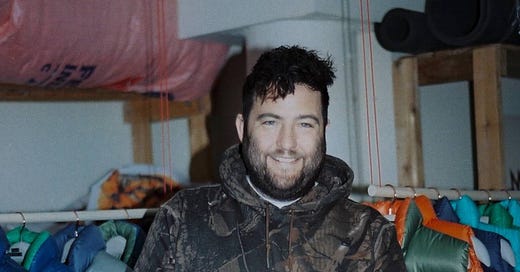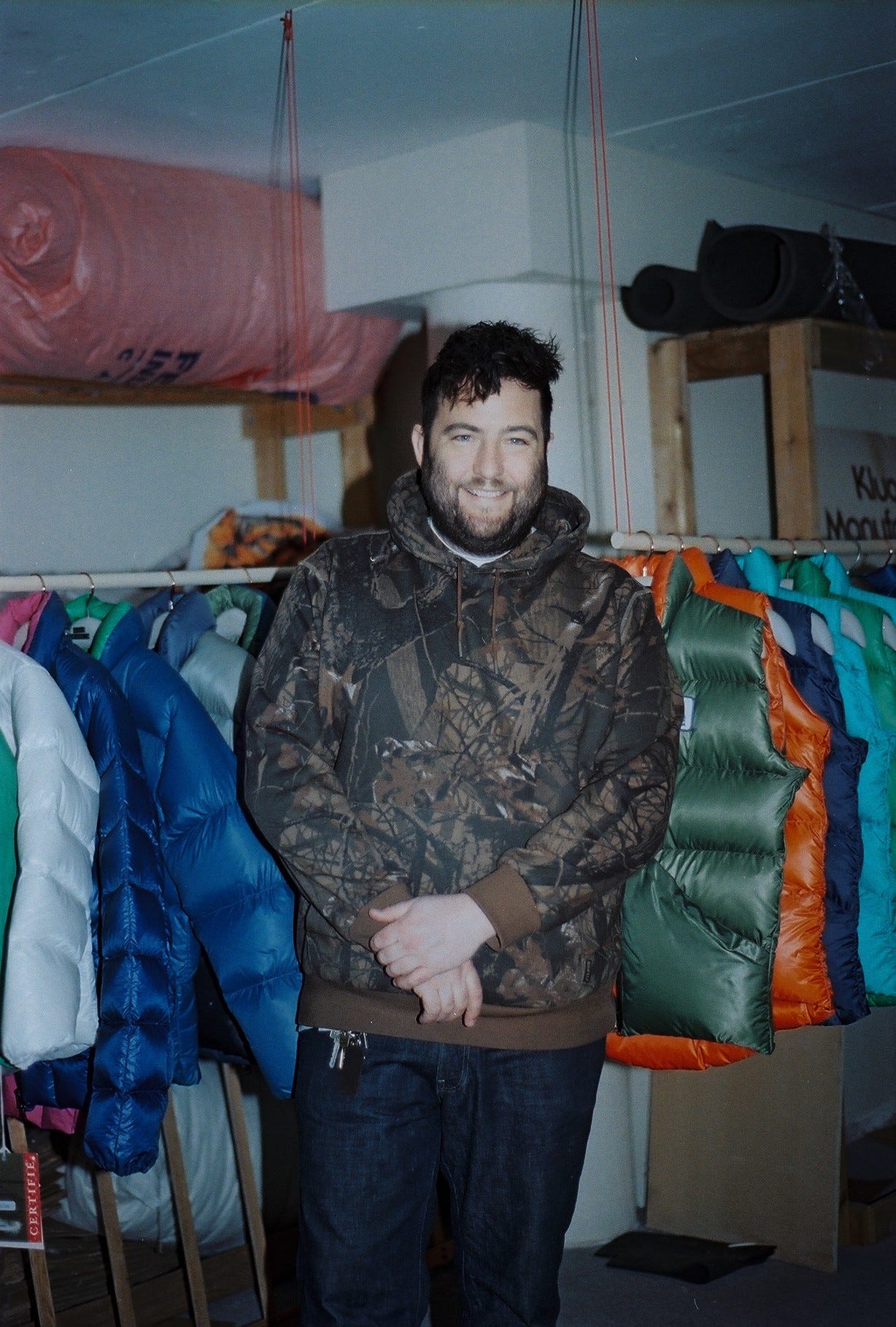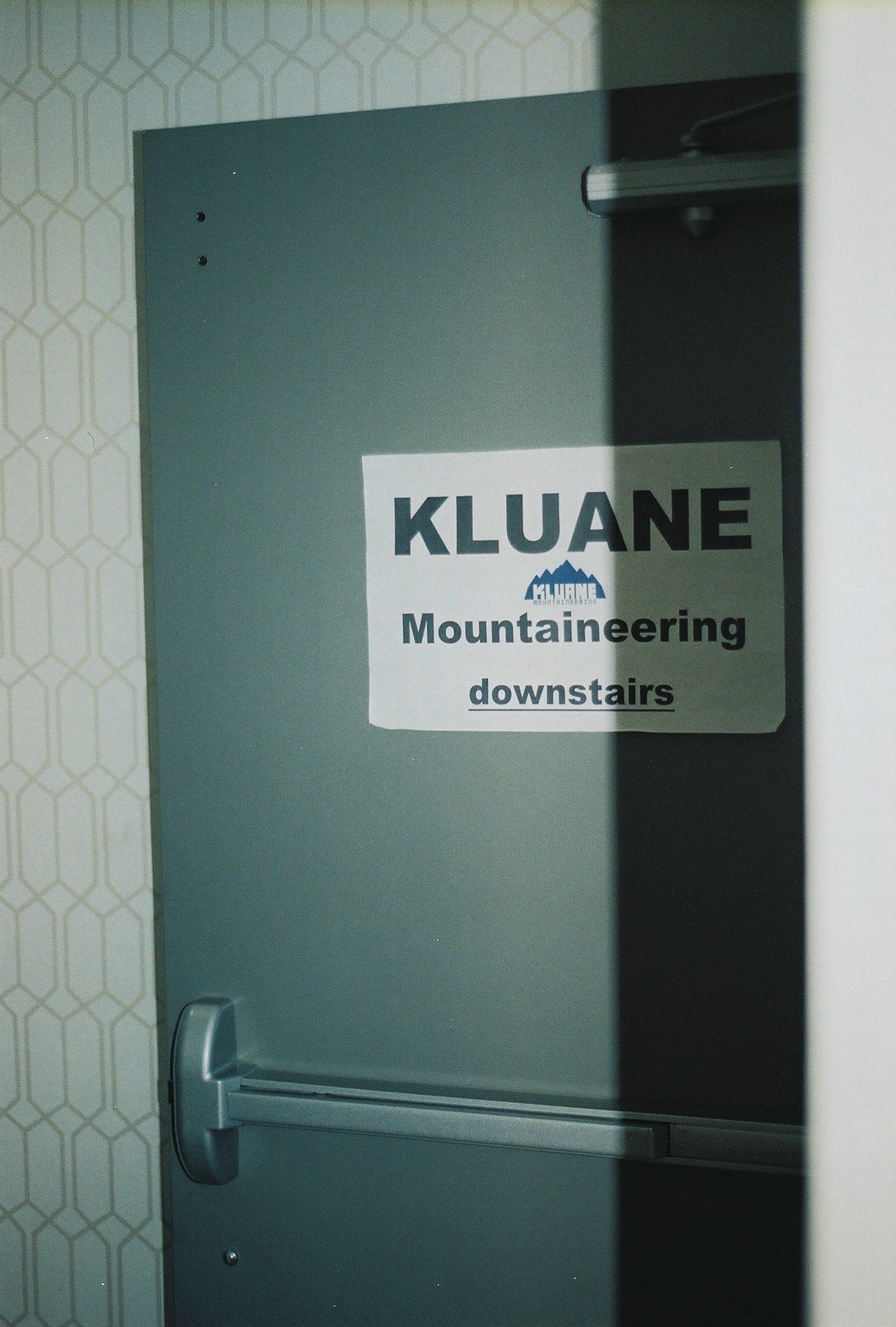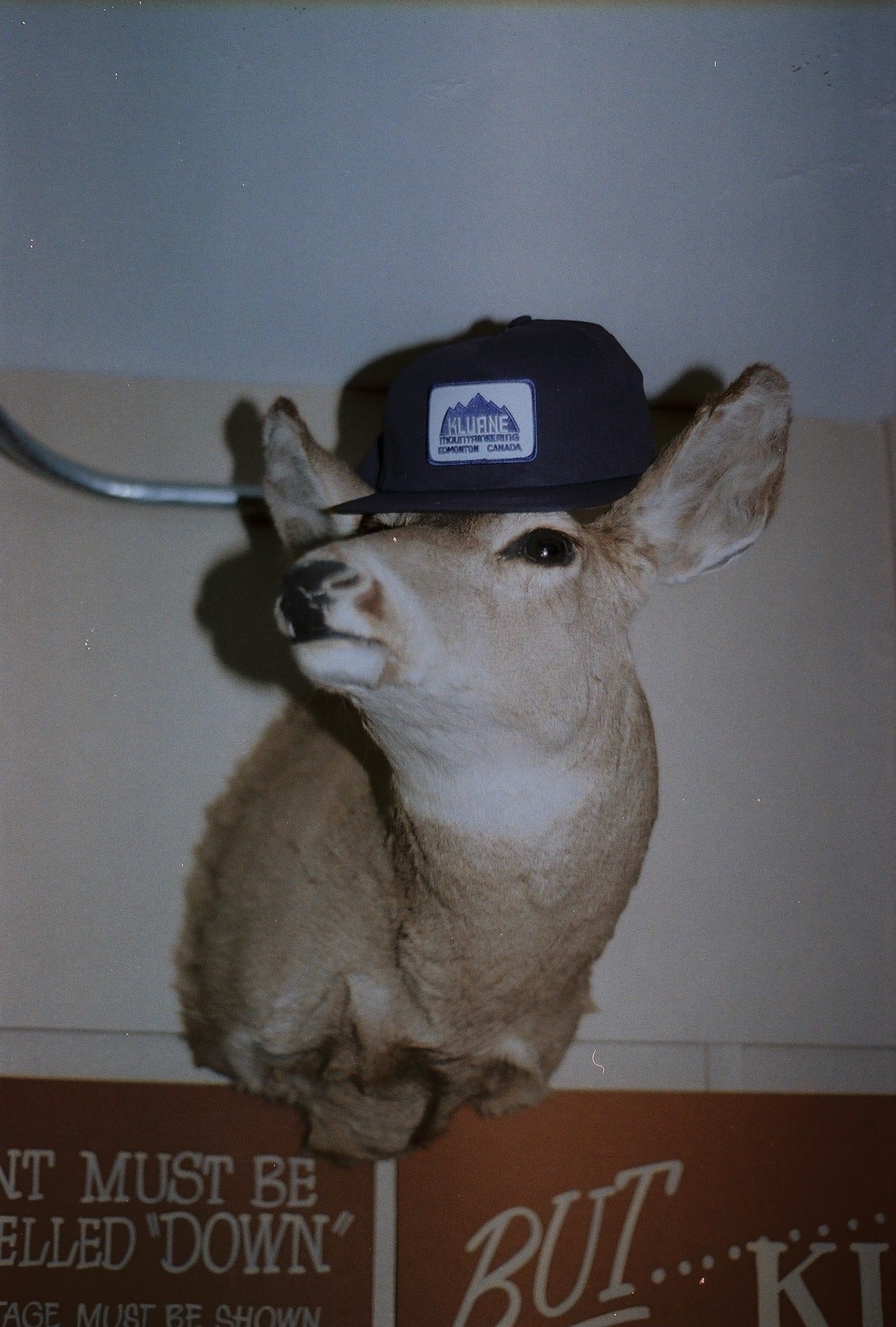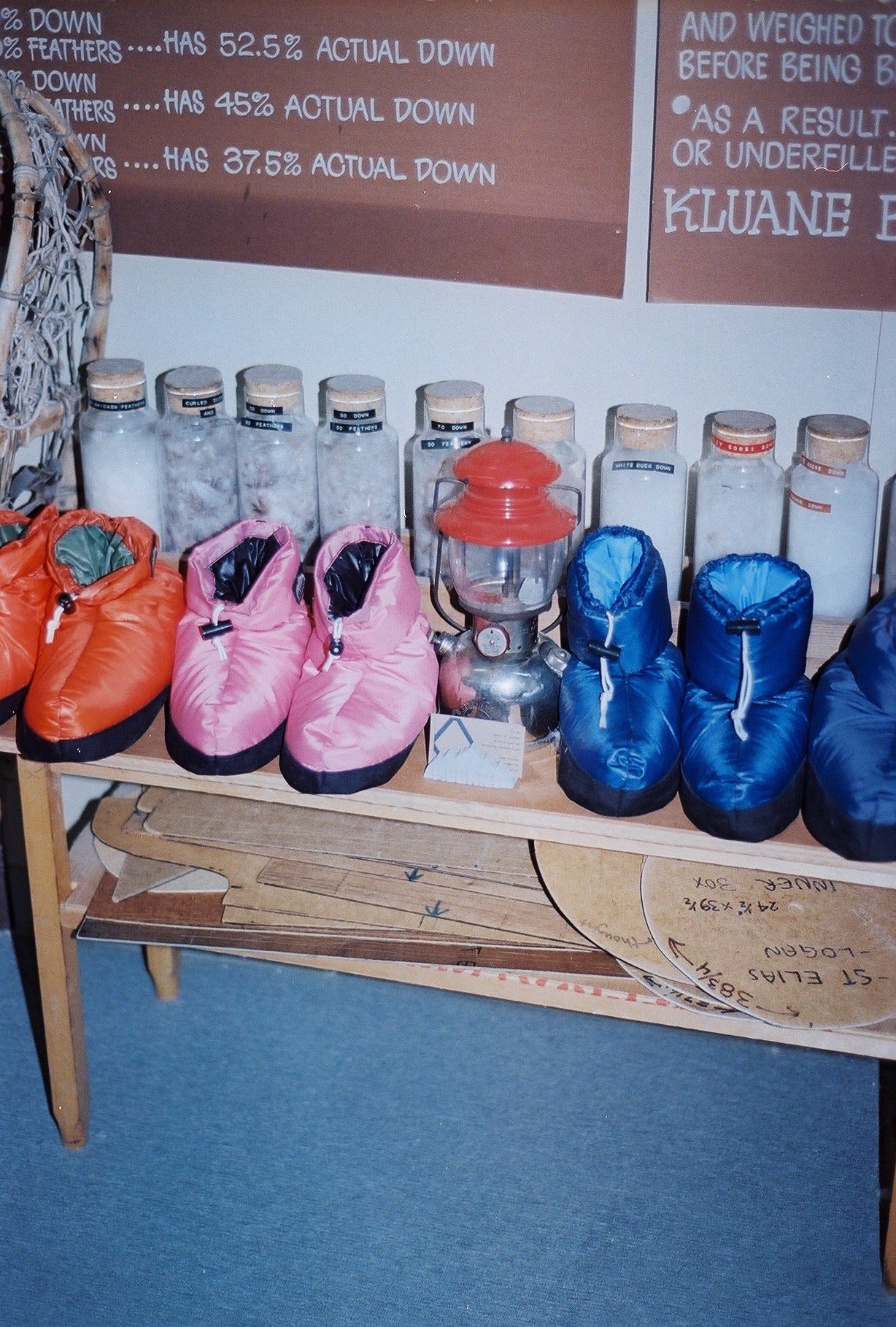Kluane Mountaineering: You can't stay underground forever
A conversation with owner and operator Dylan Lynch
Welcome to Human Pursuits, the column that features need-to-know names and stories in media and other creative spaces. Today, an interview with Dylan Lynch, owner and operator of Kluane Mountaineering, one of the world’s pre-eminent performance down garment manufacturers.
In many ways, Dylan Lynch is living the dream.
No, not everybody wants to oversee one of Canada’s most exciting upstart outdoor brands. But we all have stores and services we love; businesses we joke we’d like to start, or takeover one day.
The difference between us and Dylan is he actually did the damn thing.
A fan of Kluane Mountaineering since he discovered it on Edmonton’s Whyte Avenue about a decade ago, Dylan has traversed the not-so-well-trodden path from customer to employee and, now, owner.
Since buying the business from his mentor, Betty, in March 2023, he has worked to modernize Kluane while still maintaining its sense of heritage. Every made-to-order piece is produced in-house by him and his small team.
The result is a company poised to have a global reach but on its own terms. Free from meddlesome board members, and soul-sucking VCs.
In a city often associated with muted shades – think white snow and black ring roads, Grey Cups, and copper Oilers – Kluane Mountaineering’s vibrant product line feels like a technicolour outpost. An exciting testament to everything Canada has to offer, in terms of both business and the great outdoors.
And so, dear reader, I was very excited to make a pilgrimage and see the merchandise.
Our edited and condensed conversation touched on Dylan’s past life as a photographer, the relationship between outdoor brands and authenticity, meeting demand without sacrificing quality, Kluane’s ideal celebrity spokesperson, and more.
Big thanks to Friend of the Newsletter Raeland Mendoza for connecting me with Dylan. Go follow him on Instagram or LinkedIn.
ES: Is it hard for you to get away in the middle of the day? Or easy because you set your own schedule and can do what you want?
DL: More the latter. I justify it because I know I’ll be here till 9:30 tonight. I was working til 10 p.m. last night. I can take a half hour. Plus, this is part of getting the word out, which is the only thing Kluane is missing. Every company is trying to manufacture a history… trying to make things look old, or shot on film, or whatever. We have all that. We have postcards from customers who climbed Everest. This morning someone emailed me to say that our sleeping bag saved their life on some glacier in Argentina.
ES: That’s unreal.
DL: A lot of the stuff I’ve had to do [since buying the company] is low-hanging fruit. Like, let’s post some photos on Instagram. I was a full-time photographer for 8 years. I can take photos.
ES: What kind of photography were you doing? Nature?
DL: I worked for the Edmonton Oilers and for Hockey Canada. I did that for about six years. My friend and I also ran our own studio for a bit in downtown Edmonton. We shot some architecture and product stuff. Whatever we could get.
This morning someone emailed me to say that our sleeping bag saved their life on some glacier in Argentina.
ES: Did you go to school for photography, or were you self-taught?
DL: I was self-taught at first. In my twenties, some friends and I decided to go to university to make a go of it. In our first year, we had an intro photography class. The professor would give us quizzes and the answers were wrong. Not to say we knew more than them, but you had this fundamentals class being taught by like, a sculptor, who thought it was the way to get on the tenure track.
I was in school when I got the job with the Oilers… Like, what am I going to learn here that I can’t get doing that? It’s the coolest job in the world.
ES: Seriously. I don’t need you fucking guys anymore.
DL: Totally. So I’ve kept up with it a little bit. I sold all my digital cameras but kept my film stuff. It’s been fun to play around and get back into it. I dunno how often you’re shooting film right now, but there are a bunch of iconic cameras that have just sky-rocketed in price. I had two Mamiya 7s that I sold for $900. Now people are selling them for $5000.
ES: I mostly shoot on a Nikon EM at the moment. It’s nothing special. I’m pretty sure it was marketed to school girls in the 80s. It’s like an elevated point-and-shoot.
DL: I have a Konica Hexar AF, which is sort of the same thing. It looks like a classic rangefinder, but it’s basically a point-and-shoot with a really good 35mm f2 lens.
ES: So many cameras get fetishized because people see them being used by Frank Ocean or Kendall Jenner and it’s like… I dunno, I think someone with a good eye can create a good photo regardless of gear.
DL: I know, good luck getting your hands on a Contax T2 ever again.
ES: Exactly. I learned to shoot using a toy camera I bought at Urban Outfitters. It was a nightmare. I blew like $500 of film just learning to how load it. But it was so simple that it forced me to focus on how to compose a shot. It was the only thing I could do.
DL: I still have this HOLGA camera from twenty years ago. It was a special collaboration with the White Stripes. I think it says “Jack” on it.
ES: Wow. Laughs.
DL: The wheel on the top is that red and white candy stripe motif. It’s kind of cool. The flash has 4 different color filters. It’s probably worth $500 now.
ES: Do you feel like your work with the Oilers has informed your work with Kluane at all?
DL: For sure. Photography gave me an eye for things. I think the colour theory part of it really helps me. Knowing what tones complement each other and which ones clash. I’m really confident guiding people’s purchasing decisions in the shop. You can’t tell them exactly what you’re thinking, but you can massage the situation and guide them to clothing that might be more flattering on them.
I sort of alluded to it earlier, but even just being able to take photos myself is a huge benefit. Instagram is a huge part of the clothing business, and photography isn’t cheap. If I had to hire somebody, that’s a lot of money, especially when you’re bootstrapping everything. Kluane is paying for itself; I don’t have investors or anything, it’s all me. I sort of do everything myself. All our Reels are just me chatting in the shop, you know? I think there’s some charm built into that, though. People want to support us because they know where the money’s going. It’s not this corporate thing.
ES: That’s so important with outdoor brands, especially. If it’s not by the community for the community you can lose customers quickly. Just look at MEC, for example. They went from being this sort of indie darling to something that people love to hate.
DL: You can tell immediately if a brand is rooted in the community. We have old co-op membership cards that are handwritten, and laminated on a machine in the office. Stuff like that is more than charming. There’s something personal to it.
ES: It’s like sweat equity. It helps authenticate everything. It gives people a reason to trust you. You probably understand that implicitly, having been such a big fan of Kluane before you purchased it.
DL: When I found the store 10 years ago it was basically a joke with my friends. Like, “One day I’m going to own that place” The funny thing is that it wasn’t the first time I’d say that about a place. There was this old store called Classic Camera Exchange – it was essentially a closet, filled with the most cameras you’ve ever seen in your life. I also joked that I was going to buy that shop.
ES: Everybody probably has one store they fantasize about owning. But I imagine it must also be stressful because now you have to preserve, and probably even grow this thing.
DL: It is! I feel like a bit of a caretaker for the people that were there before me. Betty, the previous owner, was there for 42 years.
ES: She owned the business longer than you’ve been alive.
DL: So I’m really careful. There have been some really outlandish, crazy opportunities to collaborate with brands that everyone in the world knows. And, sure, that’d be cool because it’s a huge order that would make a ton of money. But I’m also mindful of Kluane’s brand identity. It’s not just about what I want.
If someone comes in and says “I’m gonna be friends with Dylan one day,” awesome. You can’t stay underground forever.
ES: It’s kind of the most Edmonton brand in that sense. You don’t get to go off and be a hot shot and make a bunch of money. Laughs. You have to remember the people who supported you early on.
DL: Exactly. Being very careful and very conscious of that, because it is important.
ES: Do you feel pressure to scale, though, even without investors?
DL: It’s not really a pressure to scale. It’s more that, through the strategy I’ve brought in, like increasing our social media presence, demand is way up. Like, 10 times more than last year. We’re already at the point where we’re almost having to say no to orders or having to push stuff out. Orders that came in this month will not be done this winter. Customers won’t need their garments in July, so we’re taking until October or November to get things done. People have left because of that, which previously wasn’t the case. We’ve almost never had someone say that doesn’t work for me.
ES: That sort of gets to what I was saying: it’s hard to have your secret and tell it at the same time.
DL: Yeah, but the brand deserves it. This is the coolest store ever. I know how excited I was to find it, and it seems silly to not share that with people. I want to allow them to have that same opportunity. If someone comes in and says “I’m gonna be friends with Dylan one day,” awesome. You can’t stay underground forever. That said, I think we still have a bit of an underground identity. We’re a little bit punk.
ES: Has anything challenged that punk or DIY approach since you took ownership?
DL: Honestly, it's saying no to those opportunities I mentioned earlier. Things that would have supercharged us.
ES: So how much money did you leave on the table?
DL: I don’t know. We can only make, like, 100 jackets for you, and that’s if you order early, you know?
ES: And these brands you’re talking with want a lot more than that.
DL: Yeah. There’s a way to make it happen, but it doesn’t vibe with what we’ve built and what people think we are.
ES: You recently returned from Paris Fashion Week. How was it?
DL: Really good. Everyone seemed super enthusiastic. It makes me sound like an Instagram business coach but the best part was the networking.
ES: Who did you meet that you were excited about?
DL: Just a bunch of people who are involved with stores I like. There’s a brand called Kardo that’s based in India. Their owner came in wearing a Kluane vest.
ES: Networking gets a bad rap but it can be really fun so long as you aren’t viewing it as a hack for your B2B sales or whatever.
DL: It can feel weird at first. Like, “Oh, there’s a pop-up for pepperoni pizza”. I don’t even eat meat, but I know everybody who matters is going to be there, so I’m gonna go.
ES: Wait, are you vegan?
DL: Pescatarian. I don’t eat anything except water animals.
ES: What’s your favourite restaurant?
DL: My true favourite, although it feels like a guilty pleasure, is The Old Spaghetti Factory.
ES: Hell yeah, dude.
DL: I had my 30th birthday on the train car. But I also really like Bodega in Edmonton, too.
ES: Not related but I was wondering: if you had to pick a celebrity or athlete to be Kluane’s first brand ambassador, who would it be?
DL: That’s tough. It has to be someone that I think is cool. So that rules out almost all athletes. If your entire life is dedicated to sport, you may not have the range I’m looking for. And I don’t want to pick a mountaineering legend because that’s too obvious.
ES: Do we go full Edmonton and say Mac DeMarco?
DL: Laughs. You know what, I’m gonna say Shel Silverstein. He looks awesome. He’s kinda punk but also low-key. Not out in front of everybody. He’s got a “if you know you know” energy about him.
ES: That’s a great choice. [Editor’s note: Shel Silverstein died in 1999; still, I think the point stands]
Dylan Lynch owns and operates Kluane Mountaineering. He lives in Edmonton.


